The global bakery products market was valued at $536.4 billion in 2023 and is forecast to reach $734.5 billion by 2030. That is a compound annual growth rate (CAGR) of 4.6% for the seven years.
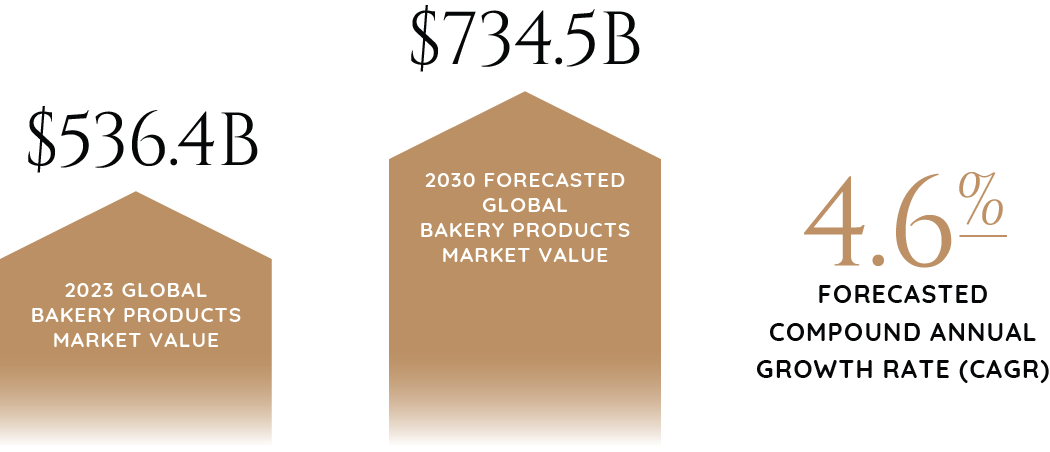
Segmentation
By Product Type:
- Cakes and pastries
- Bread and rolls
- Bagels
- Pizza crust
- Cookies
- Tortillas
- Pretzels
By Specialty:
- Fortified
- Gluten-free
- Organic
- Low calorie
- Sugar-free
By Distribution Channel:
- Supermarkets/hypermarkets
- Artisanal bakeries
- Convenience stores
- Online
- Independent retailers
Get ahead of the market with Benchmark International
Trends and Market Drivers
The bakery products market has several driving factors. One of these factors is the ever-changing consumer preference regarding health, indulgence, and convenience. More consumers seek healthy, organic, and all-natural baked goods, boosting market growth. There is also a push for trans-fat-free bakery products, which is driving competition in the market.
The bakery industry is being transformed by the adoption of new and advanced technologies in production and supply. One leading trend is the use of automation in the manufacturing process, especially in the artisanal and innovative baked goods space. Strong growth in this subsector is driving the need for automation, which allows for faster production and higher output. More manufacturers are investing in new machinery that aids in automation.
Bread is the largest segment in the bakery products market, and shifting preferences for premium bread and healthier options such as whole grain and artisanal bread are changing the landscape and providing growth opportunities.
Affordability drives demand for pastries and cakes, while demand grows for sweet, savory, and wafer biscuits. Novel storage preferences continue to drive demand in the breakfast cereal area, while impulse buying and indulgence trends drive growth for sweet bakery products. Non-conventional flavors and ingredients are making their way into baked sweets and healthier and guilt-free options. The doughnut market continues to be incredibly popular, as does the demand for fortified and functional baked goods. Healthy tortillas are also an area gaining market momentum.
There is a growing emphasis on sustainability and cost-effectiveness, driving demand for alternative ingredients such as cocoa and egg replacements.
Sugar-free baked goods manufacturers are enjoying significant growth potential, as sugar substitutes see improved penetration, and natural additives, such as the increased use of honey, are cutting demand for artificial sweeteners.
As far as packaging, single-serve, re-sealable, and lightweight packaging innovations are driving adoption in the market.
Favorable economic and demographic trends worldwide bolstered market prospects, including a growing global population, a growing middle class, a rising disposable income, and significant increases in urban populations.
By Region
Europe dominates the global bakery products market with more than 42.8% market share, thanks to its well-known bakery legacy, deep-seated bakery traditions, and the extent of the European market’s many bakery-centric cultures.
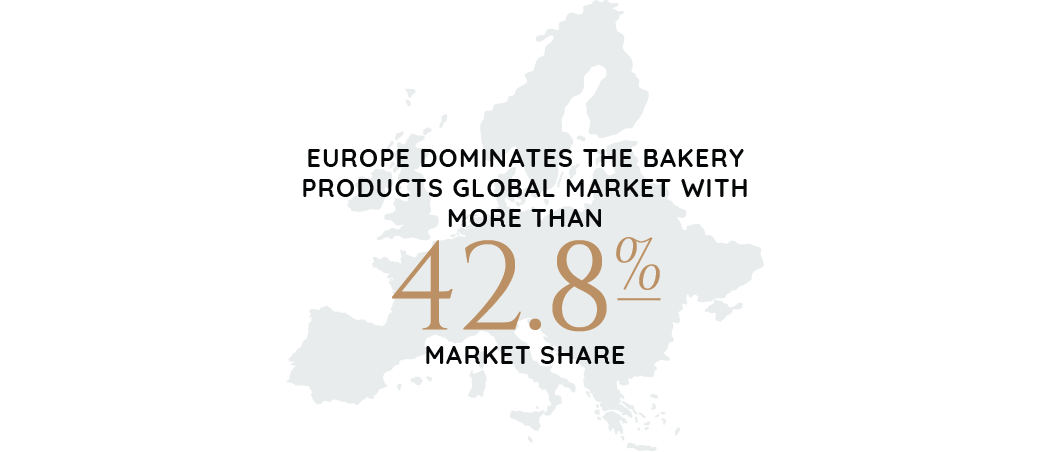
The bakery products market in the U.S. was valued at $141.4 billion in 2023.
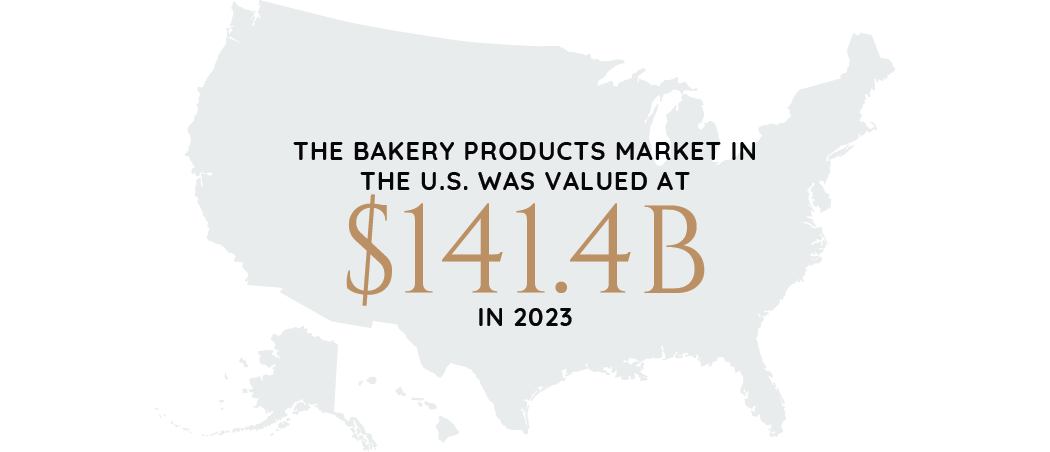
China’s market is forecast to reach $162.4 billion by 2030.
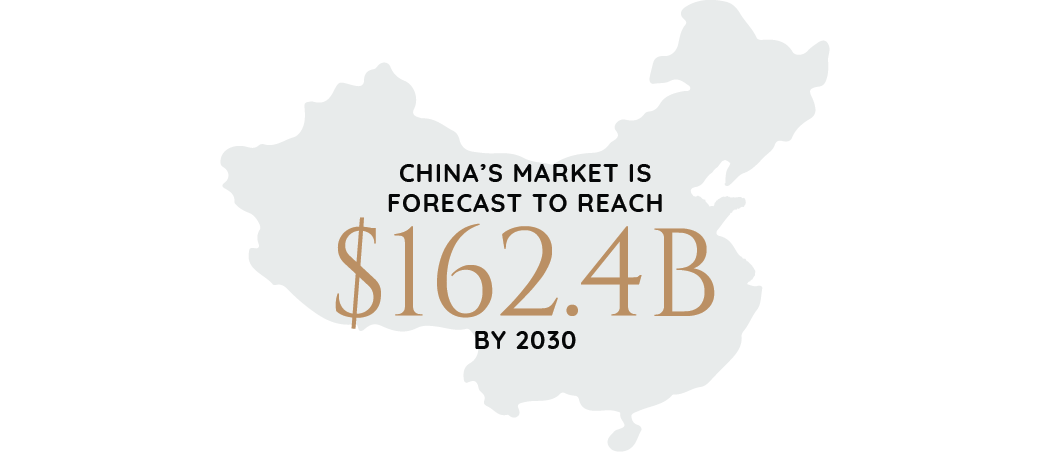
Among other noteworthy regions are Japan and Canada, each forecast to grow at a CAGR of 2.6% and 3.7%, respectively, through 2030.
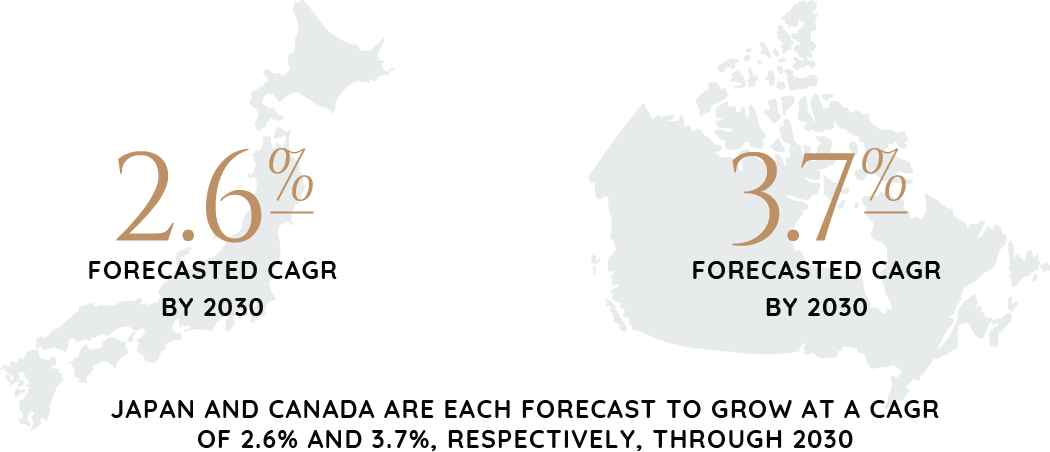
M&A
The bakery products market is resilient because most products are considered staple foods, protecting them from income fluctuations and broader business cycles. These factors, combined with manufacturers’ ability to remain innovative, mean that the sector continues to attract investors and drive M&A activity.
Today’s competitive landscape shows established players and emerging brands contending for larger market shares. Investing in facilities, automation, and employee development is key to maintaining operations and keeping bakery manufacturers competitive. Those who can adapt to meet customer needs attract investors and buyers alike. This adaptability includes adding protein for health-conscious consumers, creating products rooted in cultural heritage, or offering pre-cut items that reduce the need for labor.
M&A activity has also been driven in recent years by growth in the frozen bakery products space and the high degree of fragmentation in the industry. Many private equity firms are acquiring bakeries and are looking for more companies to add to their portfolios. Buyers are also very active in this market and are often seeking frozen, healthier, and more ethnic products, as well as ways to branch out within their product categories, add more customers, or expand points of distribution.
For sellers, consistent M&A activity in recent years indicates good news. Investors see growth in the market and are willing to pay a premium for bakeries with solid margins and growth potential. Competition has been driving up valuations recently, with solid purchase prices and EBITDA multiples among the top bakeries. Selling in today’s active M&A market can benefit bakery operators.
Categories
Get These Insights Delivered Directly To Your Email
Explore our curated collection today and stay ahead of the curve in M&A.
